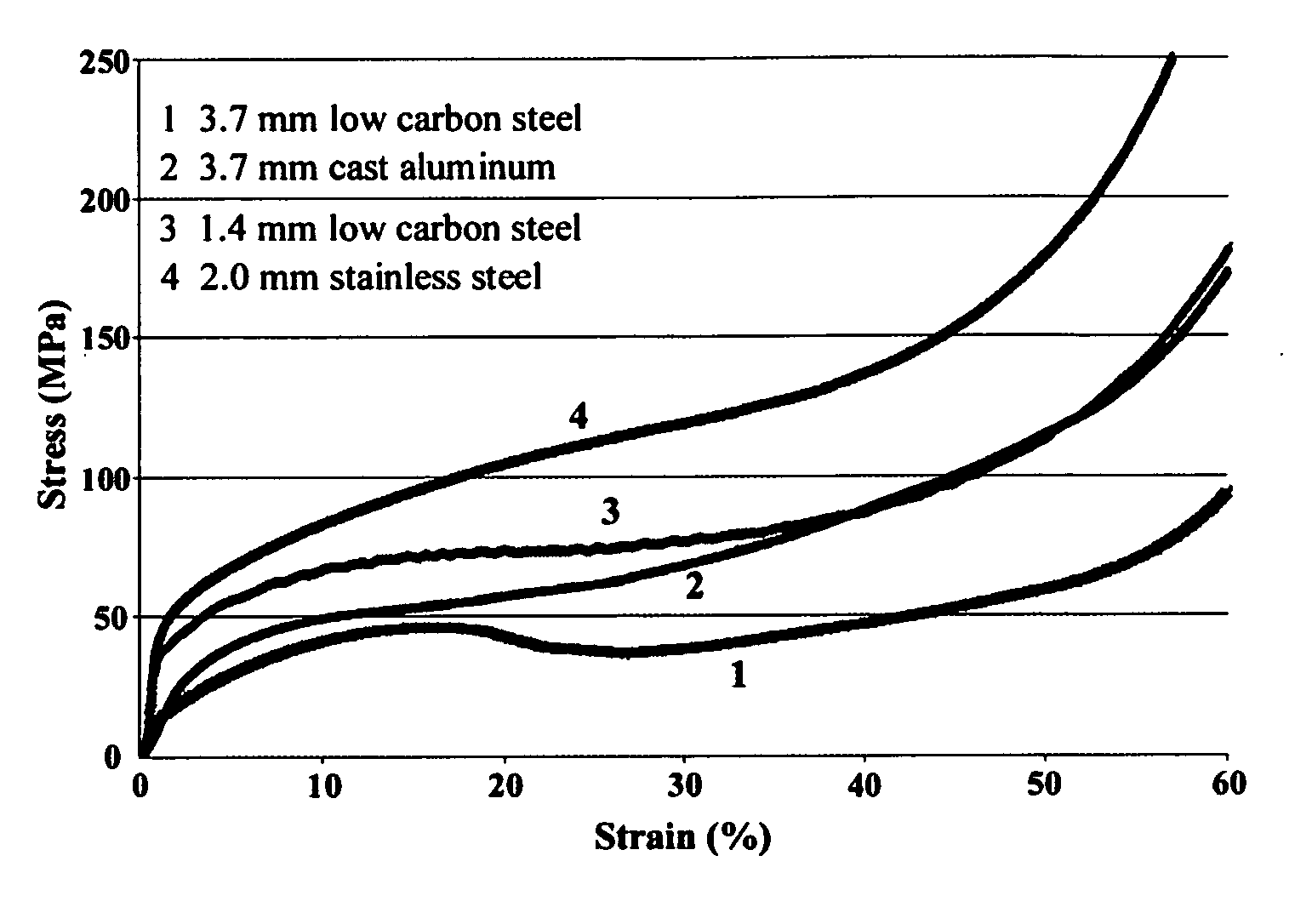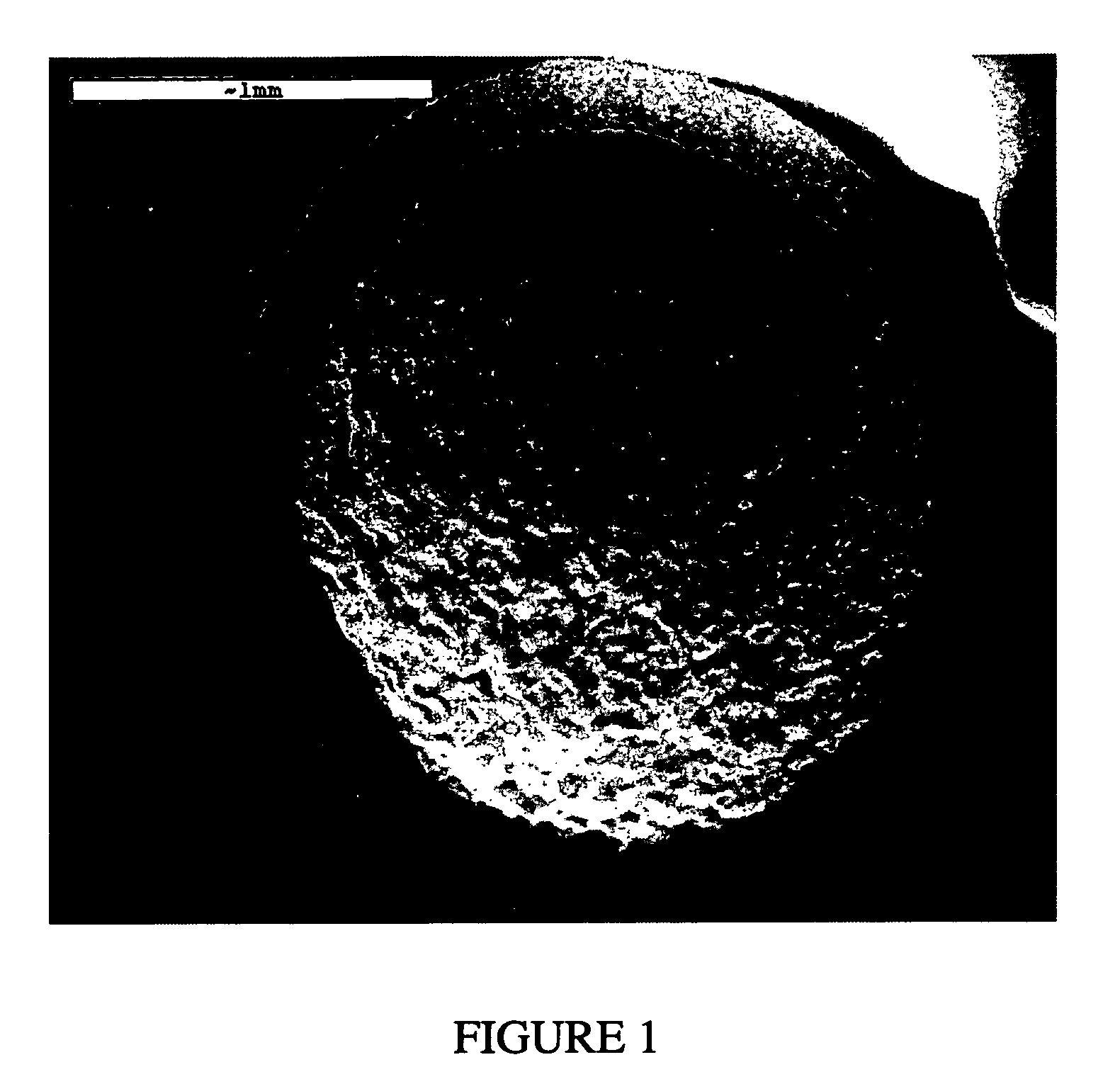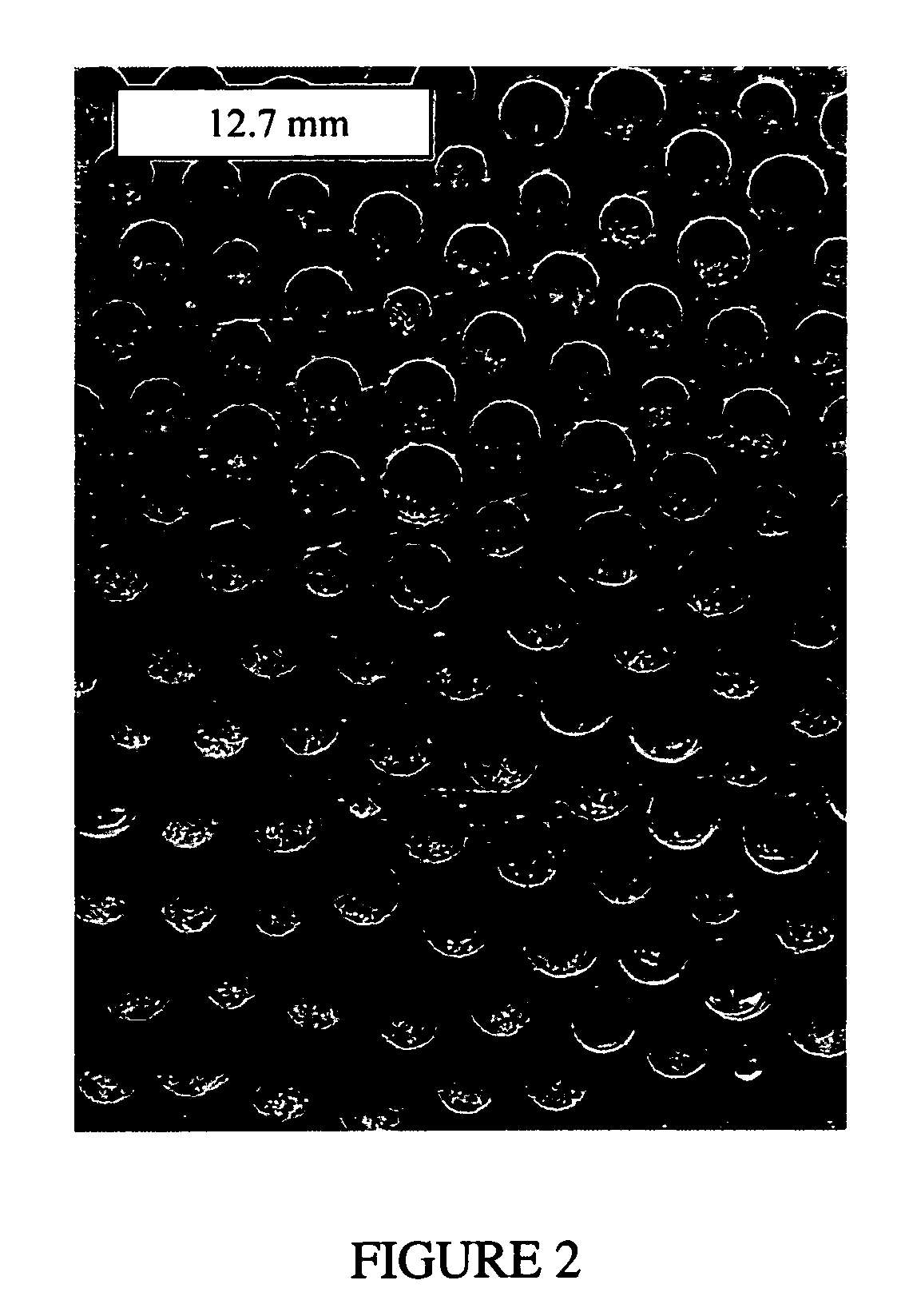Composite metal foam and methods of preparation thereof
a metal foam and composite technology, applied in the field of composite metal foams, can solve the problems of low performance of existing foams, cracking and rapid cyclic straining, fatigue degradation of metal foams in response to tension and compression, etc., and achieve the effect of maximizing the packing density of metallic pieces
- Summary
- Abstract
- Description
- Claims
- Application Information
AI Technical Summary
Benefits of technology
Problems solved by technology
Method used
Image
Examples
example 1
Composite Metal Foam Prepared by Powder Metallurgy
[0109]A composite metal foam was prepared using stainless steel spheres and stainless steel powder according to the specifications provided in Tables 1 and 2, respectively. The stainless steel spheres had an outside diameter of 2.0 mm and sphere wall thickness of 0.1 mm. The spheres were cleaned in a solution of 3.0 mL HCl and 97 mL water to remove oxides, rinsed in acetone, and dried. A permanent mold made of 304 stainless steel and having interior dimensions of 5.1 cm×5.1 cm×10 cm was used. The mold was prepared by coating its surfaces with a boron nitride mold release. The spheres were placed in the mold and vibrated for 5 minutes using an APS Dynamics model 113 shaker and an APS model 114 amplifier with a General Radio 1310-B frequency generator. The powder was added and the mold was further vibrated to completely fill the spaces between the spheres. Total vibration time was 30 minutes at 15-20 Hz.
[0110]The mold was placed in a v...
example 2
Composite Metal Foam Prepared by Casting
[0113]A composite metal foam was prepared by casting using low carbon steel hollow spheres and a matrix-forming liquid aluminum 356 alloy according to the specifications provided in Tables 1 and 2, respectively. The steel spheres had an outside diameter of 3.7 mm and sphere wall thickness of 0.2 mm. An open atmosphere gravity feed permanent mold casting system made of carbon steel was used, the mold cavity having dimensions of 121 mm×144 mm×54 mm. The mold was partially preassembled after coating with a boron nitride powder spray to prevent oxidation to mold surfaces during preheating and for providing easy release of the sample after cooling. The spheres were placed in the mold with a stainless steel mesh to hold them in place and vibrated for 10 minutes to pack the spheres into a random dense arrangement. The mold used was similar to that illustrated in FIGS. 7 and 8.
[0114]The aluminum alloy was melted in a high temperature furnace (3300 ser...
PUM
| Property | Measurement | Unit |
|---|---|---|
| density | aaaaa | aaaaa |
| porosity | aaaaa | aaaaa |
| diameter | aaaaa | aaaaa |
Abstract
Description
Claims
Application Information
 Login to View More
Login to View More - R&D
- Intellectual Property
- Life Sciences
- Materials
- Tech Scout
- Unparalleled Data Quality
- Higher Quality Content
- 60% Fewer Hallucinations
Browse by: Latest US Patents, China's latest patents, Technical Efficacy Thesaurus, Application Domain, Technology Topic, Popular Technical Reports.
© 2025 PatSnap. All rights reserved.Legal|Privacy policy|Modern Slavery Act Transparency Statement|Sitemap|About US| Contact US: help@patsnap.com



